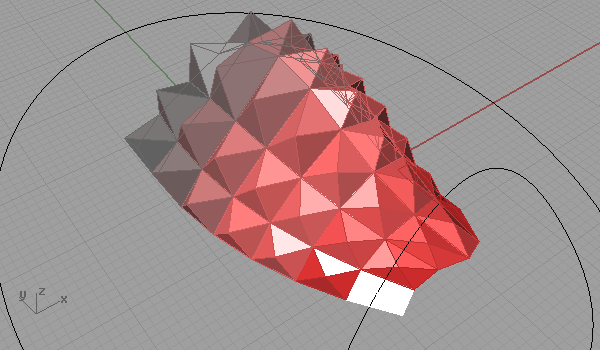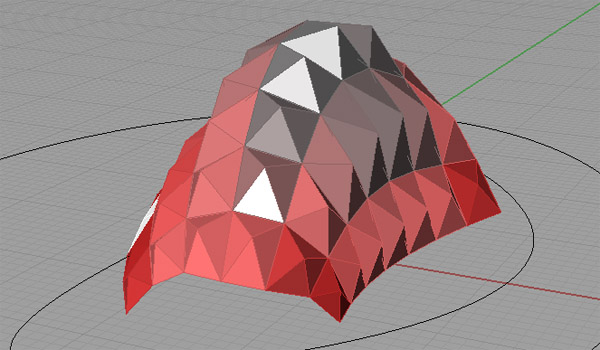Basic Curve Attractor
by Tuğrul Yazar | January 31, 2012 03:55

This study includes three main topics related to the basics of Grasshopper. The first one is the surface subdivision, the parametric definition of a surface component, that is, in this case, a simple pyramidal object. The second thing is the associative behavior of surface components with an external parameter, that is another entity in space; a curve. Traditionally, this is simply demonstrated by 1) finding the area centroids of each surface panel, 2)finding the closest point on the attractor curve for each centroid, 3) calculating the distance between each centroid and it’s the closest point on the curve, 4) moving the centroids away from the surface using the distance value and the surface normal vector at that point, 5) using extrude to point component to finalize the design. The important thing here is to find a method to compare each object (here it is the closest point and distance calculations) and assign at least one value to each of them regarding our design intentions. The third thing we learned from this exercise is the secondary parameters that are used to demonstrate the output. This might be labeling and fabrication layouts, in this case, it is the color code of the surface components. This is assigned to each component after they are modeled.

This exercise includes some methods also important for dataflow management. Sorting distance values along with their corresponding component objects; and assigning the gradient colors to them is the tricky part of the color coding here. You may test the parametric model here: [GHX file:0.080063][1]
 [2]
[2]- [GHX file:0.080063]: https://www.designcoding.net/decoder/wp-content/uploads/2012/01/2012_01_31-component.ghx
- [Image]: https://www.designcoding.net/decoder/wp-content/uploads/2012/01/2012_01_31-component-def.jpg
Source URL: https://www.designcoding.net/basic-curve-attractor/